-----Original Message-----
From: Valin & Allyson Thorn
[mailto:thorn@starflight1.com]
Sent: Thursday, October 31, 2002 9:42 PM
To: Lancair Mailing List; Don
Barnes (Legacy); Ron and Marlene Brice
Subject: Legacy Canopy Key Locking
Solution Update
Here’s a correction to the Medeco cam lock part numbers
I’d provided earlier and additional installation instructions. The part numbers are still different than
what we’d ordered while developing this concept – but, this is what
we’d order today after all we’ve learned. Hope this is more helpful…
Valin
--------------------------------------------------------------------------------------------------
Here’s how Allyson and I set up to lock our Legacy’s
canopy…
First, we purchased this Medeco high security cam lock:
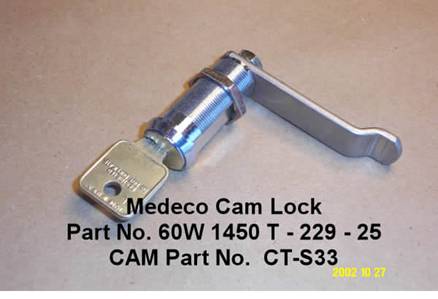
Here are the Medeco lock’s specifications:
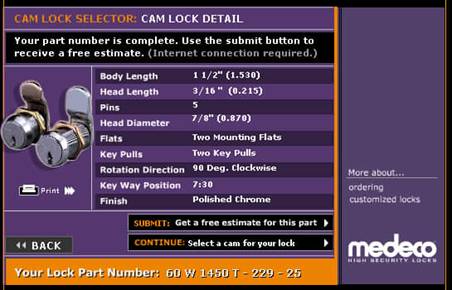

This Medeco Cam
Lock can be ordered from the RA-Lock Company of Cedar Hill, Texas
(800.777.6310).
The lock is $23.25, the cam is $0.59, and the keys are $1.75 each.
We placed the
cam lock just behind the latch handle assembly.
This allows us
to hide the key hole behind the latch handle when in the normal latch handle
position.
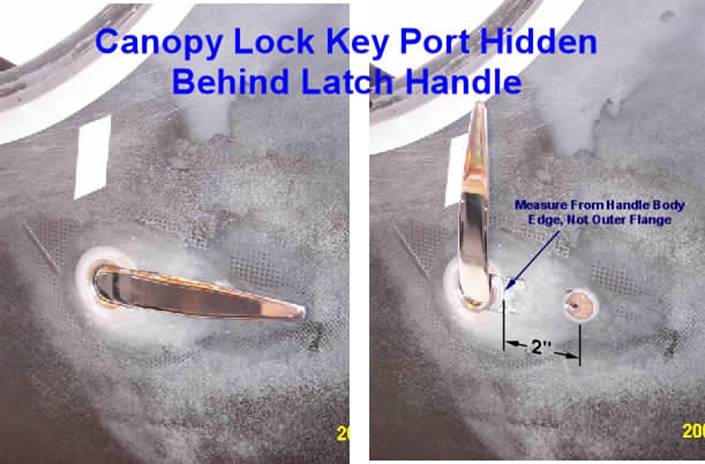
With the
canopy latch handle in its normal aft trailing position, trace its outline onto
the fuselage skin with a marker pen.
Draw a horizontal line down the center.
Measure two inches from the latch handle body edge and mark the center
of the hole for the lock. Drill a
¾” hole for the cam lock at this location. This hole is big enough for the body but not
the head of the lock. Place the lock in
this hole with the head against the fuselage skin and draw a circle around the
head. Grind away the outer skin of the
fuselage to this line so that the cam lock rests flush with the outer
skin. De-core about a half inch into the
fuselage skin around the lock head. This
area will eventually be filled with epoxy/flox mixture for final bonding.
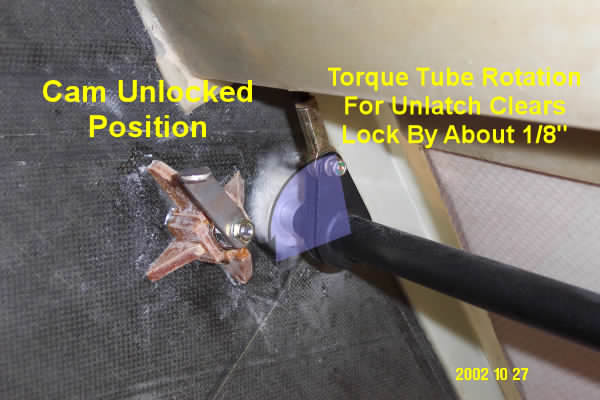
We built a
strong fuselage housing for the lock out of ¼” thick phenolic. The body of the lock has two flat sides that need to be firmly
against phenolic sheet to ensure that the entire lock housing can not be forced
to rotate. The phenolic housing sides
are basically one inch square pieces and the flanges are 45 deg triangles with
one inch sides.
The lock
head face should be bonded in flush with the fuselage skin. Tape over the key hole to ensure no
epoxy/flox enters during bonding. We put
the fuselage on its left side for this so that gravity was more helpful and
duct-taped a piece of wood against the hole on the outside to provide a
platform to rest the lock on and ensure it was perfectly flush with the
fuselage skin.
Before
bonding it all in, hold the lock with the cam in position to ensure that the
rotational orientation for locked and unlocked positions is correct and that
the cam has been bent to the correct shape.
We hammered the
cam out straight and then bent it about two inches from the attached end to get
the right geometry to block the canopy latch torque tube.
The key hole slot should be approximately vertical and at the bottom for
the locked position and horizontal and on the left side for the unlocked
position.
Bond
everything in place with an epoxy/flox mixture.
Be sure to tape over everything you don’t want epoxy on.
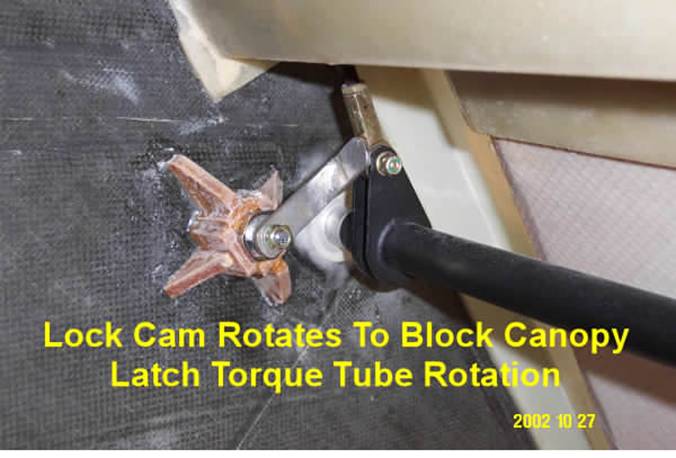
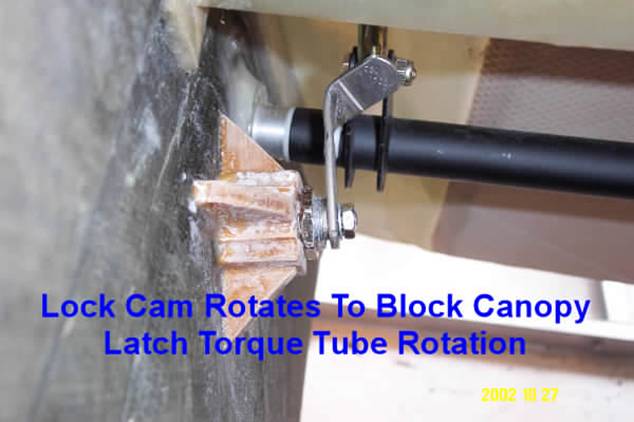
We’re
pretty happy with this solution.
It’s simple, light weight, and the key hole doesn’t show.
Valin Thorn
Legacy #173